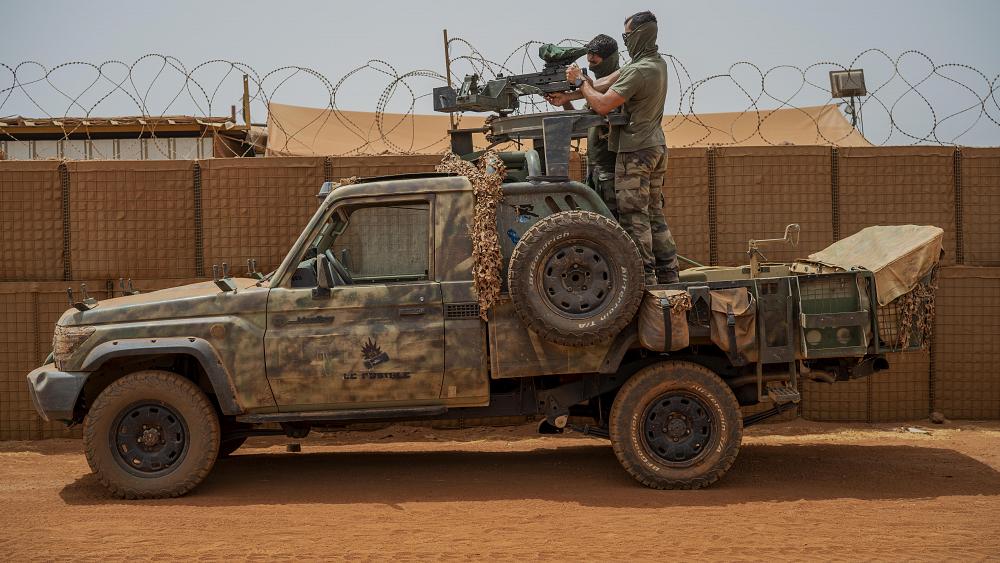
Counter-terrorism agencies in the US and Europe are urgently addressing the vulnerability of youth to terrorist recruitment in Africa and Asia. Currently, it is learnt,58 non-state armed groups in 15 countries are recruiting and using children.
The exploitation of youth by armed groups remains extensive in countries affected by violent extremism, even though it is a war crime for any armed group to recruit or use children under the age of 15. “ISIS’s ability to recruit young people was unprecedented, with youth fighters identified from at least 34 countries,” reports say.
Terrorism expert Jessica Trisko Darden published a paper for the American Enterprise Institute focusing on how governments’ understanding of “how young people enter into violent extremist groups should inform our approaches to countering and preventing youth involvement in terrorism”.
One of the widely published papers on youth radicalisation, the paper, titled ‘Tackling Terrorists’ Exploitation of Youth’, also throws light on anti-radicalisation approaches governments need to engage in to tackle the growing threat.
The author finds primarily two ways in which the indirect recruiting of children is undertaken. One, “many young people are recruited by sympathetic family members or are led to believe that membership helps defend their families or communities”. Two, “others are duped, trafficked, kidnapped, or forcibly recruited”.
The forced recruitment of children through kidnappings or outright violence is not a new phenomenon. In Africa, Since 1987, the Lord’s Resistance Army in Uganda has kidnapped more than 20,000 children, the report says, adding: Boko Haram has employed mass kidnappings in Nigeria, including the abduction of 276 schoolgirls in Chibok in April 2014 and 110 more girls from a school in Dapchi in March 2018.
In Asia, as ISIS expanded in Iraq, its members kidnapped thousands of children from orphanages, schools, and even their families’ homes. “Children under the age of 14 reportedly made up over one-third of the 6,800 Yazidis that ISIS abducted in Sinjar in 2014. A further 800 to 900 children were reportedly kidnapped from Mosul for religious and military training.” The kidnappings are still going on.
What is as worrisome as kidnappings, if not more, is the eagerness of some youth to volunteer to join terrorist groups. What motivates them? The report gives the reasons: “The search for group-based identity; the ideological appeal of the group; real or perceived exclusion, grievance, or cultural threat; the potential for economic gain or long-term economic stability; prospects of fame, glory, or respect; and personal connections, including family and friendship networks.”
A third and relatively understudied pathway into terrorism is being born into a violent extremist family, the report says. “More than 730 infants were born in ISIS-controlled territory to foreign terrorist fighters between April 2013 and June 2018. Some estimates place the total number of children born in territory controlled by ISIS as high as 5,000.”
After they are recruited, they “become even more susceptible to terrorists’ control and indoctrination, including through the use of drugs and the threat of harm to their families”. According to the report, “Boko Haram, in particular, is notorious for drugging children before sending them on suicide missions”.
Of the roughly “40,000 foreign ISIS members identified in Iraq and Syria, 12 per cent were children under the age of 18” while “at least 4,640 foreign minors have been identified as ISIS affiliates”.
Here, the family is the primary site of radicalization. “The children of violent extremists may have a much higher attachment to ideology and require more exhaustive efforts to counter their indoctrination. Leaders’ children may also serve important roles in terrorist organizations, contributing to the groups’ longevity.”
Terrorist groups employ young recruits in almost “every capacity”, like in “support roles, as recruiters, as propagandists, and as fighters”. Individuals’ specific roles are often determined by their age and gender. Generally, girls and young women primarily perform support duties, including preparing food, gathering firewood, providing medical treatment, and maintaining camps. This is true of those who join voluntarily or are forcibly recruited. “Girls and young women in many terrorist groups also take on roles that are specific to their sex, acting as fighters’ wives and mothers to their children.
Shockingly, the report says that “the very presence of young women in terrorist groups allows them to play an important role in recruiting other young women…Wives of ISIS fighters were often tasked with recruiting additional fighters to join the group…During the Second Chechen War in the early 2000s, more than two-thirds of suicide bombers in Russia were women.”
The report reveals the strategy of ISIS about the use of young boys, saying “boys may be treated as more expendable by terrorist groups and used as human shields to spare fully trained, adult fighters”. It says: “Boys have featured extensively in ISIS propaganda, with their last will and testament videos disseminated as propaganda. In Afghanistan, the Taliban has used abducted children—primarily boys—to plant improvised explosive devices and carry out suicide bombings.”
The report comes up with criteria to use “in weighing individuals’ vulnerability to radicalization and recruitment and in designing and targeting programs to counter violent extremism”. It lays “emphasis on fostering both attitudinal and behavioural change among youth vulnerable to recruitment”. It sees the need for an “expanded effort to confront the radicalization and recruitment of girls and young women by violent extremist groups”. The report underlines the importance of recognising the fact that the family is “a potential site of radicalization and recruitment, as well as a source of resilience”.






